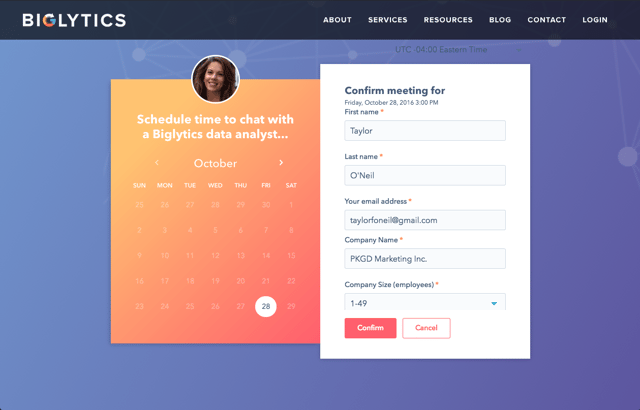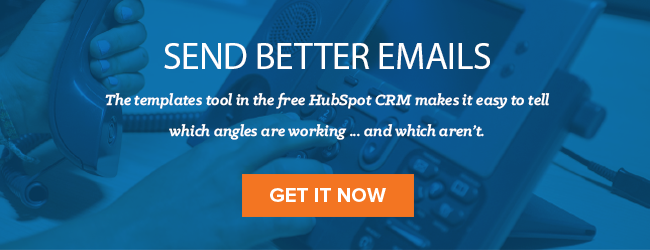
Congratulations, you’re ready to hire a Customer Success Manager (CSM)! Many industry experts say it is never too soon to hire for customer success.
Effective customer success is key to reducing churn and increasing MRR, so it’s vital the customer success manager you hire be the kind of rockstar who will lead your customer success team (and customers) to….well, success. No pressure, right?
Don’t worry, I’ve got you covered!
In today’s blog, you’ll learn:
– The top traits and skills to look for when hiring a Customer Success Manager
– Relevant interview questions for each
First, let’s take a quick look at the common backgrounds for CSM’s. Please note: these backgrounds are for informational purposes rather than suggested requirements. I don’t recommend you limit your search to candidates with only these career backgrounds.
Common CSM Backgrounds
Support. CSM candidates with support experience will understand how to delight a customer. The support background also lends itself to candidates who are comfortable and skilled communicating with customers, addressing critical situations and escalations, and have excellent problem solving abilities.
Sales / Account Management. As with support roles, sales-related backgrounds provide experience that translates well to a customer success role. For instance, successful sales experience will include being comfortable with revenue goals, strong relationship management skills, and the ability to walk customers through a process (previously a sales process, but in the CSM role this can help when onboarding new users).
Product Management. An effective CSM needs to be able to take customers’ feature requests and align internally with the product team. Because one of the Product Manager’s hardest jobs is determining when to say “no” to feature requests and when to develop new features, a CSM with product management experience will have a better understanding of how to work and communicate with the product team.
Before we dive into what to look for when hiring your new CSM, understand that I am not suggesting you ask candidates all of the questions provided in this blog. I’m not even suggesting that you need to wait for a candidate who has all of the traits and skills listed below. The goal of this post is to give a broad overview of the elements of a successful CSM hire, while your job is to determine which are priorities for your own company’s specific CSM role.
Traits and skills to look for when hiring a Customer Success Manager
Experience
Sure, it is ideal to have someone with customer success experience, but (as we discussed above) not having it shouldn’t be a deal breaker. Because customer success is still relatively new, the CSM role is also fairly recent so you’re shrinking your candidate pool substantially if you’ll only hire someone with customer success experience.
We’ve also covered that while nice to have, it isn’t mandatory that a potential hire have customer success, support, sales, or product management experience. Here’s what they should have: experience working directly with clients and at executive levels.
While not critical, experience with analytics platforms is also helpful because CSM hires should be analyzing data on a daily basis. Bonus if the platforms they have a background in are customer success analytics platforms!
Interestingly, many in the industry place experience low on the list of priorities for their ideal CSM candidate. Many industry recruiters and company founders stated the qualities discussed below were more important in determining if a potential hire would be successful in a CSM role.
Related interview questions:
– The obvious: “Tell us about your experience with _________.”
– The less obvious: “What are the metrics have you been responsible for in the past? Are your customers happy? How do you know this?”
Relationship Builder
The best Customer Success Managers excel at building and nurturing relationships. It is pretty simple…building relationships with customers is necessary for the CSM to succeed in their position. As I pointed out when discussing product management experience, CSM’s also need to build internal relationships to ensure the customers’ needs are communicated effectively to other teams.
“Sales closes the customer, and Customer (or Client) Success takes it from there — for years. 3-4 or more years, if that’s your Customer Lifetime Value. So actually, Customer Success has a much longer, and ultimately deeper, relationship with the customer than sales or anyone else in your company,” says Jason Lemkin.
Relationships aren’t perfect, so the interview questions below give the candidate the opportunity to address how they build and repair important relationships.
Related interview questions:
– “Give me an example of a time you felt dissatisfied with the way you worked with a customer. What happened? What did you do after that?”
– “Describe a professional challenge that you’ve had to overcome where you leaned on interpersonal relationships to help get through the challenge. What was the outcome?”
Empathy
Not to be confused with sympathy, empathy is the ability to step into another person’s shoes and see the situation from their point of view.
“If you want an employee to help your customers be happy and successful, it’s important for that employee to understand what happiness and success mean to your customers…To do that, they must step into the customer’s shoes,” advises Len Markidan, Groove’s Head of Marketing.
Many recruiters see this ability as more innate than something that can be taught. The first interview question (below) gives the interviewee the chance to empathize with a challenging customer. Many would consider a potential hire using the question as an opportunity to complain about the customer as a red flag.
Slack uses the second question (below) in their interviews to determine a candidate’s ability to empathize. The answers give an “indication of someone’s humility as they talk about their past and acknowledge when they got a lucky break that gave them a leg up. In some cases, this can potentially open up a conversation about privilege, and whether an applicant recognizes any advantages they may have had in getting to where they are,” writes Slack’s Matt Haughey.
Related question:
– “Tell me about the toughest customer you’ve ever had to work with. How did you overcome the challenges the customer presented?”
– “Tell me a story about how luck played a role in your life.”
Proactive

Proactive is one of the hallmarks of customer success and one of the key differences between customer success and support.
An effective Customer Success Manager will need to “implement an early warning system based on those red flags and know when you need to proactively reach out to your customers. Combine proactively managing at risk accounts with scheduled outreach when things are going well for your customer. Doing both provides you the opportunity to learn your customers’ pain points, while also establishing long-term relationships and trust to effectively reduce churn and increase revenue,” advises Suzanne Gedney, Director of Customer Success at Chargify.
Related questions:
– “Talk about a time you foresaw a potential issue for a customer and proactively reached out to them. What was the situation? How did the customer respond? What was the outcome?”
Excellent Communication Skills
Your CSM will be communicating with customers and internal teams, at all levels. With that in mind, when interviewing candidates you should be evaluating both verbal and written communication skills.
Many companies email job-related questions to potential hires prior to phone interviews to assess their written communication. Pay attention to whether the text answers are clear, the tone of the communication, and if the tone is appropriate. Tone will vary and some company cultures will look for a more informal, humorous tone while that would be inappropriate for representatives of other companies.
Markidan points to a use case for the benefits of communication clarity. While the example is specific to support, the learnings can still be applied to customer success teams:
“What if your team could send one less email per support interaction because they didn’t have to clarify anything that your customer didn’t understand the first time? If your team fields 500 requests each week, that’s 26,000 fewer emails sent in a year.”

In the interview questions below, the idea is to see how well the candidate can break down something they know very well to someone who may not be familiar with that activity. This is key because a CSM will be doing just that when onboarding your new users and when training new customer success employees. If your product is more complex, you can ask the interviewee to explain a more complex process they’re already familiar with.
Or, you can test their ability to break down instructions in another scenario: You (or whoever is conducting the interview on your company’s behalf) can do a basic walk-through of your product with the candidate. Then, ask them to repeat the process back to you.
Because clear communication is important with both customers and coworkers, consider asking an interview question that addresses the potential CSM’s ability to communicate with inter-departments.
Related questions:
– “We’d like to get an idea of how you can clearly explain concepts and processes to customers. Tell us, step-by-step, about something that you shop for online, and how you go about searching, choosing and purchasing it.”
– “Describe a time when you had to work with resources outside of your own department to address a customer’s need. What part did you play in formulating a solution for the customer?”
Natural Leader
As is the case with empathy, natural leadership is a skill many feel hard to teach and prefer to hire people with natural leadership skills. Leaders motivate and influence others, and your new Customer Success Manager will need to do those things for customers and internal teams.
Natural leaders take “even difficult and unfortunate circumstances and create a game plan to solve the problem and encourage everyone during that time to do their best. That instinct to take initiative and encourage your team is a really key element that is difficult to teach someone if that is not their natural inclination,” writes business consultant Malcolm Rowlings.
Natural leaders are also strong teachers; your CSM will need to be able to guide both customers and team members.
Related questions:
– “Tell me about a time when you created agreement and shared purpose from a situation in which all parties originally differed in opinion, approach, and objectives.”
– “Tell me about a time when you and your team faced challenging odds. How did you keep them engaged and motivated to overcome the situation and succeed?”
Strategic Mindset
By strategic mindset I’m referring to a potential hire’s ability to see the long-term picture.
“A person who has strategic perspective creates clarity out of complex and seemingly disconnected details. They can feel the winds of change, sense points of conflict and opportunity and articulate in concrete and compelling terms how they can be addressed. They get to the heart of a problem and see the relationship between key elements,” explains James Beck, Managing Director of Effective Governance.
The first interview question, below, can be asked to determine the candidate’s ability “to synthesize all of their learning over time, and develop a more strategic view of current and future customers’ needs,” suggests FirstMark.
Related questions:
– “Talk me through a client you’ve worked with; why did they buy? What were their goals? And how do you help them achieve those goals?”
– “How do you think this position should be evaluated — what should the performance metrics be?”
Creative Problem Solvers

Customer Success Managers “are masters at collectively identifying and articulating what people really want, creating learning conversations, designing options and presenting alternatives,” says B2B marketing expert Pam McBride.
You want a CSM who is innovative and flexible. They’ll not only need to problem-solve issues related to customers, but also use those skills in designing customer success processes that scale.
Additionally, a CSM needs to be able to dig deeper and find out what the root cause of a feature request is. A creative problem solver may have alternate solutions to the root issue that don’t involve product management and development of a new feature, so one of the questions below provides candidates an opportunity to address that.
Related questions:
– “Have you ever had to discuss a feature request or bug with your product team? How did you determine requirements and assess the need to escalate that specific request or bug to the product team? What was the outcome?”
– The best way to see how an applicant will problem solve an issue is to role-play and put them in uncomfortable situations with a “customer”
– An angry customer demanding a refund
– A customer asking for a discount
– A customer making a feature request & becoming frustrated that there hasn’t been more movement on making the feature request a reality
Positivity / Passionate
Attitude goes a long way! When identifying potential CSM hires, look for someone who is truly passionate about helping customers succeed. The ideal candidate is someone who feels real satisfaction from delighting customers. Passion can translate to a CSM who searches out innovative ways to inspire customer loyalty.
“Positivity is about the language you use to communicate with your customers. Subtle differences in word choice can make a huge difference in the way a customer perceives a support transaction,” explains Markidan.
Related questions:
– “What types of problems are you most eager to solve?”
– “If we did not offer you this job, which other jobs are you interested in / applying for?”
– “Tell me about a time you went above and beyond for a customer. What was the outcome?”
Technical Expertise
Similar to experience, many in the industry listed this skill as less important than some of the other skills and traits listed in this post. Most feel that technical expertise can be taught more easily than some of the other traits we’ve discussed.
FirstMark suggests if the product you offer has “a vertical solution and low average sales price (ASP), like GitHub or Okta, you may be best served by someone with a technical background. These individuals are equipped to develop a deep familiarity with the product and its use cases, and relay domain-specific feedback to product and engineering at a very technical level.”
If you offer a solution that requires your CSM to have technical expertise, the related interview questions will obviously be very specific to the technology.
For candidates who may not have (and don’t need) all the technical expertise, the question below can give some insight into how they go about learning new things…which they’ll need to do if they’re getting up to speed on your own product and any new technology.
Related question:
– “Describe the last time you learned about a new subject matter. How did you begin learning? What resources did you take advantage of?”
I won’t go into detail, but below are some additional skills and traits to look for when hiring a CSM:
– Patience
– Outstanding organizational skills
– Self-motivated
– Enjoys learning
Last, but not least – Culture!

It is important to make sure the CSM candidate is a fit for your company’s culture. At Chargify, we’re proud of our company culture and core values. It is so important candidates are a fit with our company culture that we put our core values right in our job postings! Even if you don’t do the same, make sure you’re clear about your company culture in initial conversations with potential hires.
Conclusion
Customer success is essential to increase revenue and reduce churn, and hiring the right Customer Success Manager is key for your business’ success. While the list above is not all-inclusive, my goal was to share some of the most important traits and skills to look for when hiring a CSM.
Do you already have a CSM in place? Which qualifications did you find most important for hiring your CSM? Anything you would add to the list for future hires? Let me know in the comments below.










 Today I want to talk about what I’ve found to be the five things that keep business owners up at night. I’m sure there are many more that you can add to this list, but I researched by looked at a whole bunch of blog posts and reports. I tried to figure out what’s keeping you up at night if you’re a small to midsize business owner. What are the things that are keeping your head spinning? We all have been there. I mean, you’re laying in bed at two o’clock in the morning and you’re thinking, “Oh, man, if I only did…” Or you get up first thing in the morning and you’re dreaming about processes and things like that. That happens to me all the time.
Today I want to talk about what I’ve found to be the five things that keep business owners up at night. I’m sure there are many more that you can add to this list, but I researched by looked at a whole bunch of blog posts and reports. I tried to figure out what’s keeping you up at night if you’re a small to midsize business owner. What are the things that are keeping your head spinning? We all have been there. I mean, you’re laying in bed at two o’clock in the morning and you’re thinking, “Oh, man, if I only did…” Or you get up first thing in the morning and you’re dreaming about processes and things like that. That happens to me all the time.
 The second thing that keeps people up at night is cash flow. That’s a hard thing to manage. I could tell you this, you have an accounting system, you invoice people, and hopefully they live up to their commitment. I just got off the phone with a buddy of mine, who has spent upwards of almost nine months trying to get people to pay their bill. He’s struggling and struggling and they don’t pay it, because they want a refund. They don’t feel like they got what they wanted. There are other times where you do exactly what they want and they still don’t pay you. One of the things I’ve found is, the larger the project, the easier, generally, it is to get paid. It’s the thousand, five thousand, twenty-five thousand dollar projects, where people already have the money allocated, committed and it is ready to go.
The second thing that keeps people up at night is cash flow. That’s a hard thing to manage. I could tell you this, you have an accounting system, you invoice people, and hopefully they live up to their commitment. I just got off the phone with a buddy of mine, who has spent upwards of almost nine months trying to get people to pay their bill. He’s struggling and struggling and they don’t pay it, because they want a refund. They don’t feel like they got what they wanted. There are other times where you do exactly what they want and they still don’t pay you. One of the things I’ve found is, the larger the project, the easier, generally, it is to get paid. It’s the thousand, five thousand, twenty-five thousand dollar projects, where people already have the money allocated, committed and it is ready to go.





 Finns place a lot of value on free time and play. By law, teachers must give students a 15-minute break for every 45 minutes of instruction.
Finns place a lot of value on free time and play. By law, teachers must give students a 15-minute break for every 45 minutes of instruction. In Finland, teaching is one of the most revered professions with a relatively high barrier to entry.
In Finland, teaching is one of the most revered professions with a relatively high barrier to entry.

















 A business blog can be a smart marketing move. It can help you build relationships with new and existing clients, demonstrate your knowledge and position you as the expert in your industry.
A business blog can be a smart marketing move. It can help you build relationships with new and existing clients, demonstrate your knowledge and position you as the expert in your industry.































![Free Resource: 10 Sales Call Script Templates [Download Now]](https://no-cache.hubspot.com/cta/default/53/64e5789a-605c-4e14-90d9-8aa3df310ee1.png)


 What does the social media landscape look like in 2017? What networks are going to help me drive awareness, conversation and conversions? What types of content will have the most impact on my audience? Is Snapchat a good investment?As we near the end of 2016, these are likely just a few of the questions being asked by marketers everywhere. While I’d love to say there’s a magical crystal ball with all the answers out there, we all know that nothing is permanent or sure-fire when it comes to social media. But we do have some data and insights that can help.In it’s
What does the social media landscape look like in 2017? What networks are going to help me drive awareness, conversation and conversions? What types of content will have the most impact on my audience? Is Snapchat a good investment?As we near the end of 2016, these are likely just a few of the questions being asked by marketers everywhere. While I’d love to say there’s a magical crystal ball with all the answers out there, we all know that nothing is permanent or sure-fire when it comes to social media. But we do have some data and insights that can help.In it’s 


